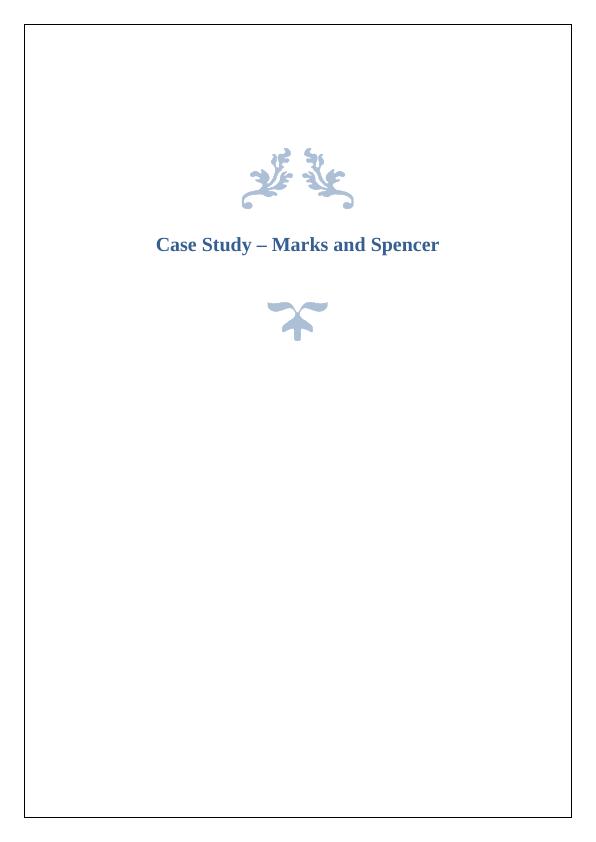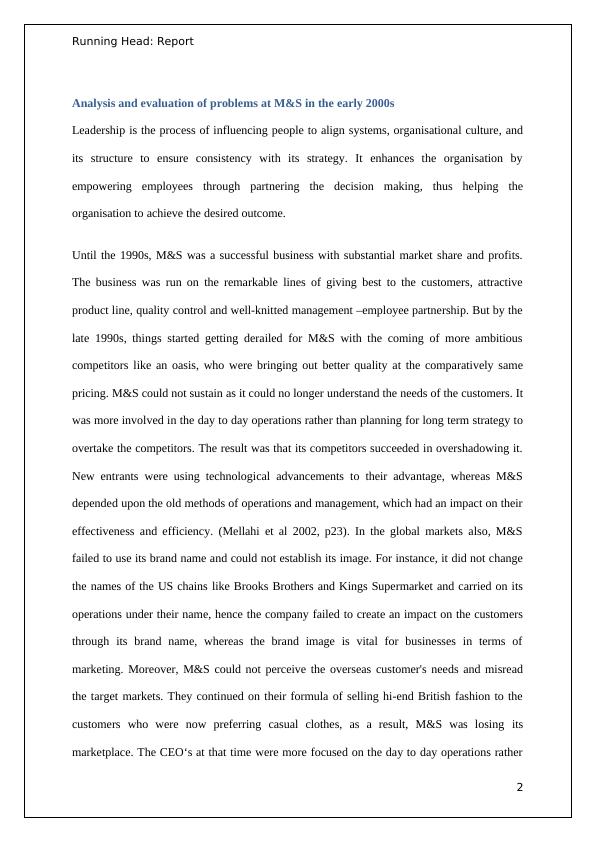Analysis and Evaluation of Problems at M&S in the Early 2000s
This is an exam for the course MBA 7002 Strategic Management.
9 Pages2476 Words69 Views
Added on 2022-12-19
About This Document
This case study analyzes and evaluates the problems faced by Marks and Spencer in the early 2000s, including competition, lack of innovation, and failure to understand customer needs.
Analysis and Evaluation of Problems at M&S in the Early 2000s
This is an exam for the course MBA 7002 Strategic Management.
Added on 2022-12-19
ShareRelated Documents
End of preview
Want to access all the pages? Upload your documents or become a member.
Strategic Management in Mark & Spencer
|11
|3159
|83
Brand Analysis Report
|13
|4269
|36
Swot Analysis of Marks & Spencer
|6
|1379
|319
A detailed study of marks and spencer
|15
|3355
|369
Marketing and Communications in a Digital World - A Case Study of Mark & Spencer
|14
|2901
|241
Impacts of PESTLE environmental factors on Marks and Spencer
|9
|2617
|59



